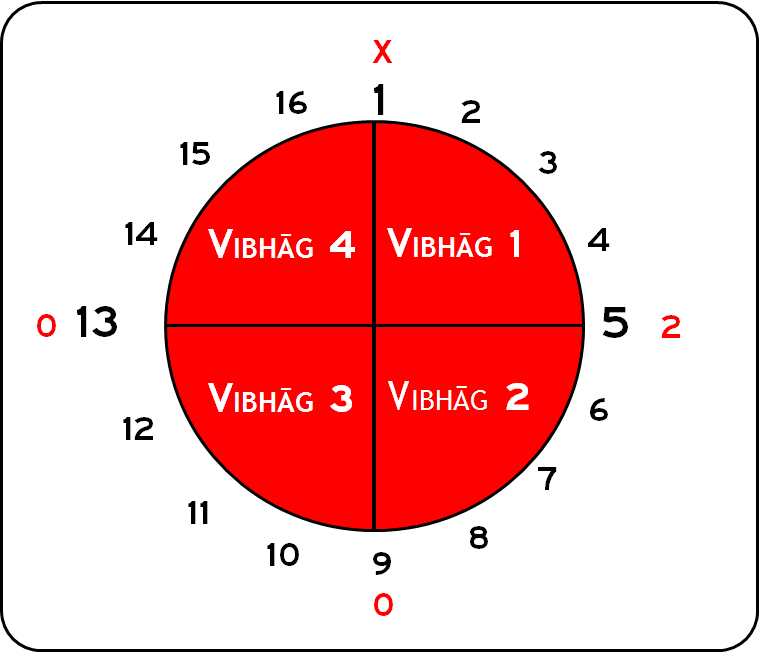Krsna Kirtana Songs est. 2001 www.kksongs.org
Home ⇒ Music Center ⇒ Talamala
Understanding Talamala
The tāla is one of the three components of musical trinity; namely the melody (rāga), drone (sur), and rhythm (tāla). It is so important that one cannot sing without obeying rhythm. This page will acquaint one to the concepts of rhythm.
Tāla rhythmic form
Tāla literally means clap. In music, tāla is a rhythmic cycle.
Tāla can be examined with a tāla diagram

Mātrā = fundamental unit of time (measuring time).
The number of mātrās helps identify the tāla.
16 mātrās = 1 cycle.
The first mātrā in any cycle is known as the sam.
vibhāg divides the tāla into sections based on the flow of the tāla. The number of mātrās per vibhāg does NOT have to be equal.
tāli points of emphasis; usually have open bāyā; CLAP
khāli points of de-emphasis; usually ends open bāyā, closed bāyā, or no bāyā; WAVE
TALA NUMBERS
X = sam
2, 3, 4 = tāli (after sam)
0 = khāli.
One complete cycle is known as an āvartan. There are sixteen mātrās per āvartan.
To describe tāla structure, the following can be said. There are four vibhāgs divided 4+4+4+4. (4+4+4+4=16). This tāla has tālis on sam, mātrā 5, and mātrā 13 with a khali on mātrā 9.
TĀLA IDENTIFICATION
Ultimately, in conjunction with the tāla structure, tālas in North Indian music are defined by the ṭhekā. The ṭhekā is the bol formation of how the tāla is played on the rhythmic instrument. The ṭhekā is the most simplest and standard way of playing the tāla.
UNDERSTANDING TĀLA NOTATIONS
|
X |
|
|
|
0 |
|
|
|
||||||
|
1 |
2 |
3 |
4 |
5 |
6 |
7 |
8 |
||||||
|
dhā |
ti |
ṭe |
ti |
ṭe |
tā |
ti |
ṭe |
ka |
ṭa |
ga |
di |
ga |
na |
The top red numbers are the tāla signs.
- The X indicates sam, the subsequent 2, 3, 4, etc. indicates talis following the sam.
- The 0 indicates khāli. The above tāla has sam on mātrā 1, khāli (0) on mātrā 5, and another tāli (after sam) on mātrā 7, shown by a number 2 (meaning second tali.)
The middle black numbers are the mātrā numbers. This indicates position of the tāla based on the number of mātrās the tāla has. The above tāla has eight mātrās.
The last row has the bols that are to be played. The appropriate bols are given at their respective mātrās in the tāla.
To understand tabla bols, (which is the convention of KKSongs Talamala), please click here for the tabla bols and their sound files.
To understand khol bols, please click here for the khol bols and their sound files.
UPDATED: September 2, 2016
